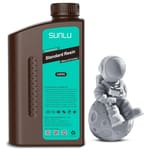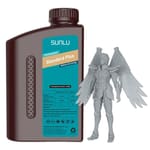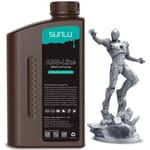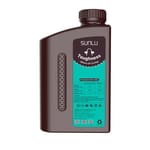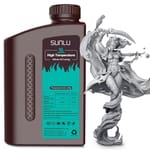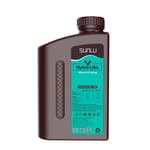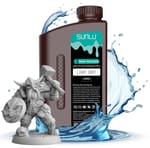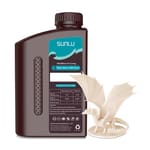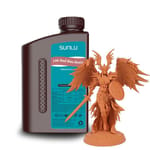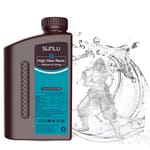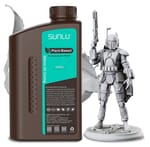If you’re into printing, there’s a high chance that you’ve heard of or tried Sunlu materials. The company has been producing materials since 2013, and they’re popular in the FDM community. But did you know they produce 3D printing resin, too?
Among users, Sunlu resins are appreciated for their great price and ease of use. Resin is usually more expensive than filament, but if you need to stock up, you can easily buy bottles in bulk on Sunlu’s website at reduced prices. Additionally, there’s a wide variety of materials with different characteristics. For example, their Standard resin is the most popular choice for beginners, but some makers who are into miniatures especially like Sunlu’s ABS-Like resin.
Whether you’re crafting prototypes, printing art pieces, or realizing functional pieces, knowing which resin to use can significantly impact the quality of your final product. In this article, we’re going to dive deeper into the Sunlu’s resin catalog to let you know which resin to buy.
Let’s dive in!
Considerations
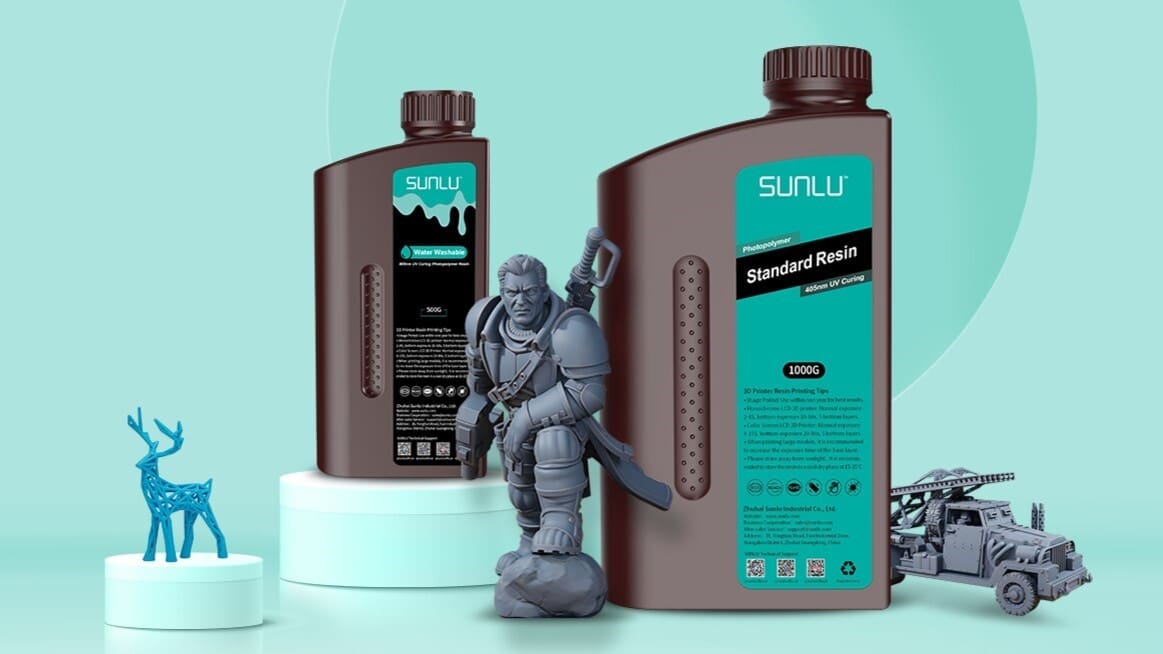
Sunlu offers no less than 10 kinds of resins that you can choose from! We’ll take a look at all of them and highlight the key differences between them. However, there are some things you should pay attention to regardless of which resin you buy.
The first thing you should consider is the resin’s wavelength. Different types of resin printers use different light sources, and the curing wavelength varies between them. Sunlu resins are formulated to be cured with a wavelength between 395 nm and 405 nm. Therefore, you’ll able to use those materials with both LCD (MSLA) printers and DLP machines.
Storage and usage conditions are also important things that should be taken into account. Bottles of resin need to be kept away from UV light as much as possible to avoid premature solidifying and degradation of the material. In fact, if you pour the resin into your tank without noticing the solid chunks of materials, you could ruin your machine’s FEP film.
Additionally, the resin should be stored in a dry environment between 15 °C and 35 °C. This ensures that the material doesn’t degrade and lose its mechanical properties. In order to ensure a proper curing process during printing, the temperature of the printing environment should be in the same range, but Sunlu recommends an optimal range of 25 °C and 35 °C.
Finally, according to Sunlu, the maximum shelf life their resins is 24 months. 3D printing resin contain a series of additives that degrade over time, so it’s important that you use the bottles for functional pieces by the end of this period.
Standard
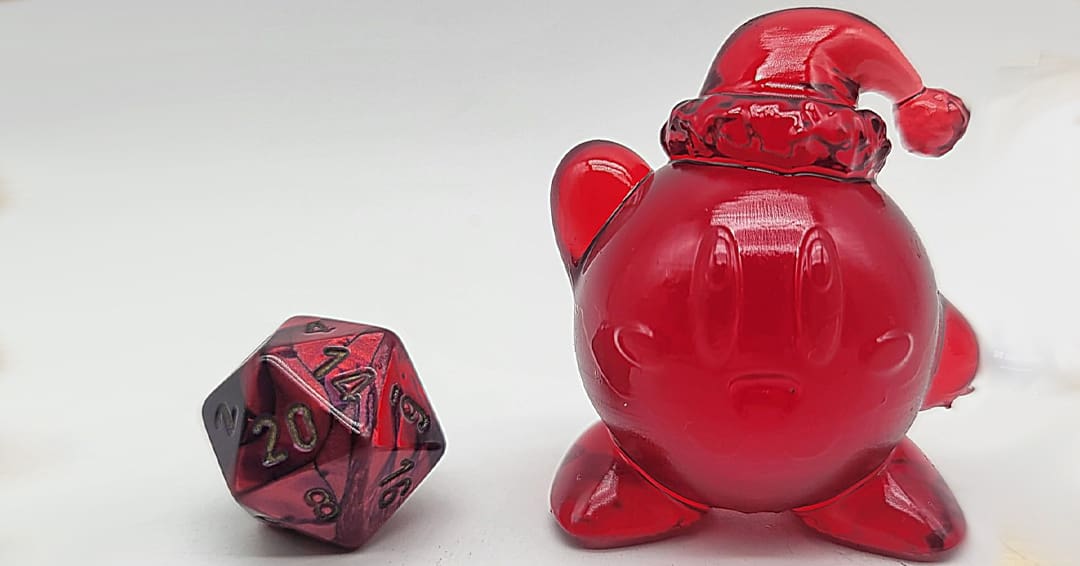
The Standard Resin is to resin 3D printing as PLA is to FDM printing. Standard Resin is the most used material, since it’s the cheapest and easy to find. When you buy a new 3D printer, chances are that your machine will come with a pre-built profile for standard resin.
Sunlu has concentrated its efforts on making this material low shrinkage for better print accuracy and also in offering a wide range of colors, including transparent hues. This makes that material perfect for aesthetic purposes with a great price-quality ratio.
With a 4.7-star rating and over 1,650 reviews, Sunlu’s Standard Resin is quite appreciated. Users find it easy to use – even at high speeds. The downside is its brittleness, which some makers have commented upon. If you need something tougher, you’ll want to check out the next section.
- Viscosity: 100-350 mPa/s
- Density: 1.05-1.15 g/cm3
- Colors: 15 colors including primary and secondary colors, a few transparent hues, as well as beige/skin
- Sizes: 0.5 kg, 1 kg, 3 kg, 4 kg
- Price per kg: ~$40
Performance
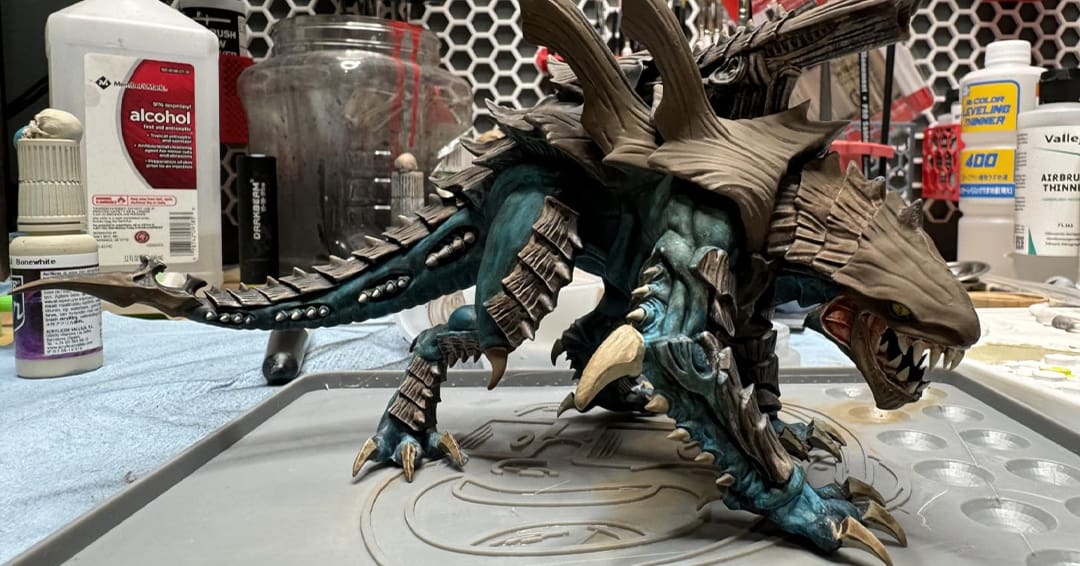
If you’re looking for resins with specific mechanical properties, performance resins are undoubtedly the way to go. They’re designed to provide higher strength, flexibility, and durability, making them ideal for a wide range of applications. Sunlu offers many types of materials that provide different advantages. Let’s take a look!
Standard Plus
Compared to their Standard Resin, Sunlu’s Standard Plus Resin was formulated to offer greater toughness and precision – it allows for printing with an 8K resolution. Further, it has a lower viscosity, which allows the excess resin to drop in the tank, leaving less residue on the model.
Makers seem to be very satisfied with this resin. For example, an Amazon reviewer shared that they use this material for molds and are able to achieve the necessary detail on their prints. Other have noted that they experience very few failures with this resin. However, if you’re used to printing with ABS-like and engineering resins, you shouldn’t expect the same level of strength.
- Viscosity: Not specified
- Density: Not specified
- Colors: Gray, dark gray
- Sizes: 1kg, 3kg
- Price per kg: ~$40
ABS-Like
As the name implies, this kind of resin is meant to replicate as much as possible the mechanical properties of ABS. Comparing the datasheets for Sunlu’s ABS-Like Resin and their ABS filament, we can see that the resin does a great job with the elongation at break, which is only 2% less than the filament’s. Where their ABS-Like Resin stands out is impact strength. It can withstand a higher impact force than than ABS: 60 J/m vs. 19 J/m.
These characteristics make this resin ideal for functional pieces. Users have tested Sunlu claims and found out that prints made out of this material can really withstand a pretty good force without chipping. Furthermore, makers appreciated the price-quality ratio that this resin provides, with great properties at a moderate price.
Just be on the lookout for part deformation. A maker reported that thin flat pieces printed in this material can bend over time. So, this material may be best suited for thicker models. Additionally, make sure to properly ventilate your workshop when using this resin, as suggested by a reviewer at Amazon.
- Viscosity: 200-400 mPa/s
- Density: 1.04-1.14 g/cm3
- Colors: White, gray, dark gray, black
- Sizes: 1 kg, 2 kg, 3 kg
- Price per kg: ~$36
High Toughness
Sunlu High Toughness Resin is meant to offer great impact strength for your functional pieces, while still maintaining high precision. Featuring an Izod impact strength value of 120 J/m, the material achieves these goals flawlessly! For comparison, ABS-Like Resin offers half of that impact strength, and Standard Resin comes in only at 30 J/m.
With such a high impact resistance, parts printed in this resin might not lend themselves to sanding. If you’re looking to post-process your model further after washing and curing, ABS-Like or Nylon-Like Resin might be a better choice.
- Viscosity: 200-350 mPa/s
- Density: 1.10-1.16 g/cm3
- Colors: White, gray, black
- Sizes: 1 kg, 2 kg, 3 kg
- Price per kg: ~$36
High Temperature
Sunlu materials names are quite self-explanatory. Sunlu High Temperature Resin is meant to be used for functional pieces that will operate in elevated heat conditions. The heat deflection temperature of this resin is 130 °C! Furthermore, for short periods of time, it can withstand even higher temperatures, such as 150 °C for an hour and 180 °C for 15 minutes!
The filament has great ratings. The user UmFrumBahstin gave it 5-stars on Sunlu’s website and noted that this resin provides “good outdoor heat resistance”. An Amazon reviewer suggested that it’s a little bit more brittle compared to competitors but still vouches for the material.
- Viscosity: 250-550 mPa/s
- Density: 1.14-1.20 g/cm3
- Colors: Transparent, gray, dark gray
- Sizes: 1 kg, 2 kg
- Price per kg: ~$36
Nylon-Like
Nylon-Like Resin was created to emulate nylon properties. Although the characteristics of this resin aren’t the same as PA filament, this material offers great properties that other resins can’t provide. For example, Nylon-Like Resin’s elongation at break reaches up 50%, compared to the 20-25% of ABS-Like Resin. Additionally, its bending strength is one of the highest among Sunlu resins with a range of 20-50 MPa.
Makers have noted that prints in this resin are less prone to accidental breaks and praise their dimensional accuracy. The downside, however, is that it causes more strain on the printer’s FEP film, deteriorating it faster compared to the standard resin.
- Viscosity: Not specified
- Density: Not specified
- Colors: Gray, dark gray
- Sizes: 1 kg
- Price per kg: ~$50
Water-Washable
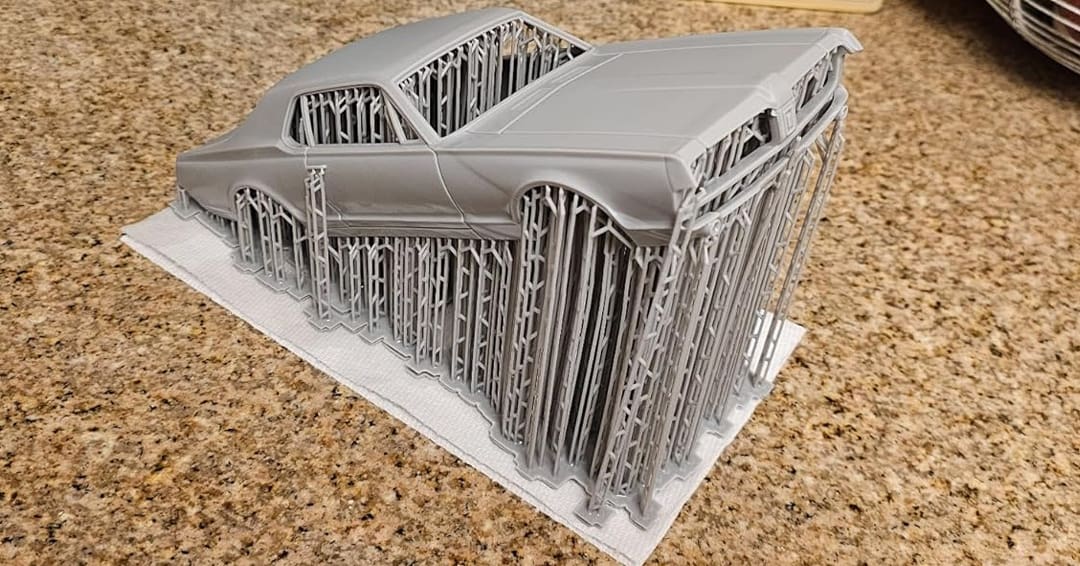
After you print a model with resin, you need to wash it to take off the excess resin that’s on the model surface. To do that, isopropyl alcohol (IPA) is usually needed. Unfortunately, IPA is expensive and, depending on where you live, not too easy to find. For this reason, water-washable resin could be best suited for your workshop.
Standard
Sunlu’s Water-Wash Standard Resin is meant to offer the same properties as Standard Resin with the advantage of being washable with water. Unfortunately, not as many colors as Standard resin are available, making it less suitable for aesthetic applications that require specific hues.
Users have noted their appreciation of being able to use water instead of IPA to post-process their prints. The workshop should be more pleasant to work in, thanks to the absence of a strong IPA smell. Amazon reviewer Terricon4 recommends a two-part rinse involving warm-to-hot water for best results especially when printing miniatures.
This resin, however, may leave something to be desired when high detail is required. We came across a couple of reviewers who called out the poor details in their prints, but one of them suggests the amount of detail is enough for normal purposes.
- Viscosity: Not specified
- Density: Not specified
- Colors: White, light gray, dark gray
- Sizes: 1 kg, 2 kg, 3 kg, 4 kg
- Price per kg: ~$25
ABS-Like
Like the previous item, this resin is a water-washable version of their ABS-Like Resin. The range of applications is wide: jewelry, decor, functional parts, educational models.
This versatile resin also boasts good ratings, and reviewers are happy with its bending properties and dimensional accuracy – perfect for functional parts. The downside is that, like the previous material, this resin isn’t the best choice for detailed prints.
- Viscosity: Not specified
- Density: Not specified
- Colors: White, light gray, dark gray
- Size: 1 kg
- Price per kg: ~$40
Specialty
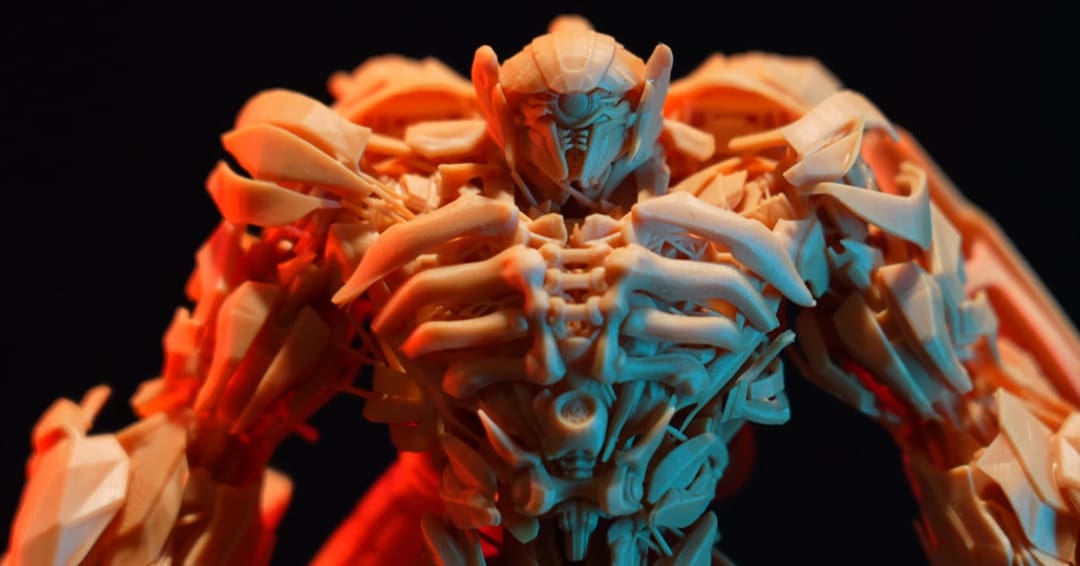
This section includes some materials that offer unique properties. We have talked about the best fits for mechanical parts, so now we’ll concentrate on resins with unique aesthetic characteristics.
Red Wax
The Red Wax Resin has the highest resolution of resins produced by Sunlu. This material is meant to give you the best results with high-resolution printers, such as machines that offer 10K resolution up to 14K! This characteristic makes this material ideal for printing models with intricate details, such as figurines.
Users confirmed that you can achieve highly detailed prints with this resin, and they like the color and surface finish of the parts.
- Viscosity: Not specified
- Density: 1.14-1.20 g/cm3
- Color: Red
- Size: 1kg
- Price per kg: ~$46
High Clear
High Clear Resin is formulated to offer excellent transparency, with a model finish similar to glass. Furthermore, it provides great resistance to yellowing, so your pieces can stay clear for long periods.
Users have confirmed this but also recommend that you don’t mix old and new clear resin to obtain a uniform print. Follow the suggested parameters on the resin bottle to make sure your pieces will come out clear, as recommended by a fellow maker at Amazon.
Keep in mind that if you need to print detailed models, clear resin might not be the right choice for you, since it doesn’t capture details as well as other materials.
- Viscosity: Not specified
- Density: Not specified
- Color: Clear
- Size: 1 kg
- Price per kg: ~$46
Standard Plant-Based
This material is one of a kind, since it’s the only Sunlu resin made of environmentally friendly materials. Even though it’s made of soybean oil, it keeps the properties and printability of Standard Resin, making this a perfect material for environmentally conscious makers.
Petra, a reviewer on Sunlu’s website, has confirmed that this resin prints well and can be used for intricated prints too. Also, makers on Reddit report that this plant-based resin prints as good as the Standard Resin and has the added benefit of not being as smelly.
Clean-up may take a bit longer, though. A user says the resin seems to be more viscous than the Standard Resin, and the uncured plant-based resin didn’t come off with IPA as easily as Standard Resin does.
- Viscosity: Not specified
- Density: Not specified
- Colors: White, light gray, dark gray, black, skin
- Size: 1 kg
- Price per kg: ~$36
Accessories
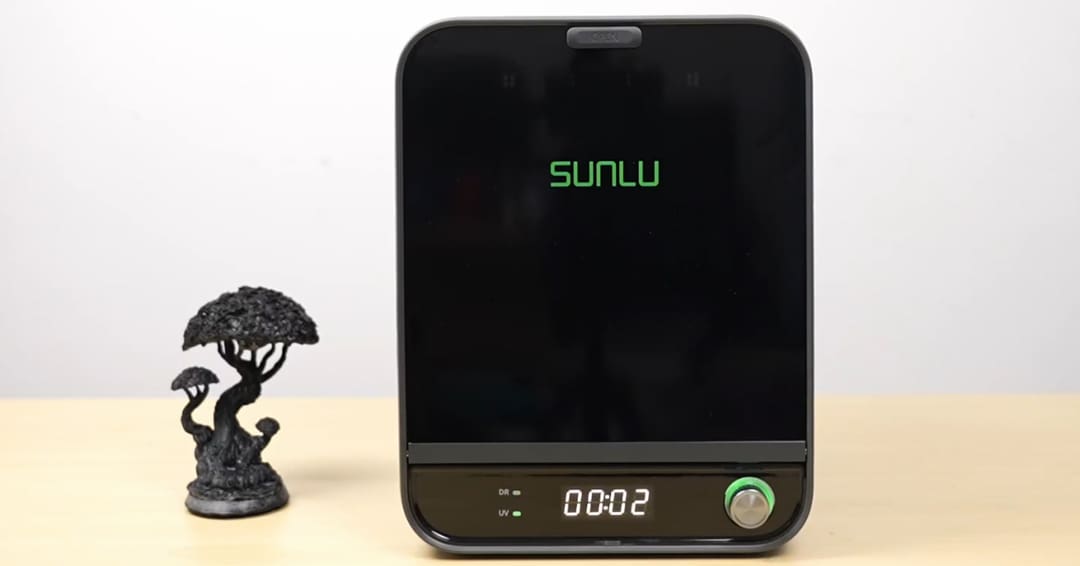
Now that we know every resin that Sunlu sells, let’s take a look at some other items on its listing that may be useful when resin printing. As mentioned, the typical resin workflow involves machine printing, washing with alcohol or water, and final curing. Sunlu provides a triplet of instruments that will make the post-processing more convenient.
Crystal Coating Resin
If you want to take your prints to the next level, you can consider post-processing your models further. A path that you might take is the Crystal Coating Resin from Sunlu. This kit includes eight small bottles of resin that you can use to coat the surface of your prints. This will make them smoother, glossy, and more pleasant to the touch. The kit will set you back about $30.
The user N on Sunlu’s website confirmed that this kit works great. It’s easy to use, since it comes in small bottles. The kit includes three colors: clear, silver, and gold. This allows you to give your model the exact finish you desire.
If you’re looking for a clear surface, Sunlu also offers a Crystal Clear Epoxy Resin Kit for creating clear resin models or coating your prints. Users have particularly appreciated it thanks to the many accessories included and the ease of use.
UV Resin Curing Box
The workflow of resin printing typically involves a post-process in two phases: washing and curing. We have already talked about the washing part, so now let’s focus on the last step. Sunlu’s UV Resin Curing Box II offers a great curing volume of 200 x 200 x 250 mm for big projects or batches of small prints.
Additionally, it offers not only curing but also drying, so after washing you can dry your pieces directly in the curing box. A uniform finish is ensured, thanks to the 360° turntable. This is a great plus that not many curing boxes can brag about.
Users are happy with this machine, and they particularly appreciate the drying feature of this curing box. They have also noted that curing time may be longer than usual with this machine, so make sure to carefully check the print and give it another spin if needed.
Stainless Steel Funnel Set
Finally, let’s talk about one of the most annoying parts of resin printing logistics: pouring resin in and out of the tank. This process is messy, and usually, resin printers arrive with paper funnels that aren’t very efficient. If you’re serious about resin printing, you’ll find Sunlu’s stainless steel funnel set a great addition to your workshop. It costs about $13.
Stainless steel funnels are fast, easy to clean, and won’t rip on you when pouring resin. Makers like that strainers are included – very helpful for filtering out the solidified pieces. Some find it more convenient than a plastic one. You can buy a pack of two funnels with four strainers included and two brushes to clean the funnels after use.
License: The text of "Sunlu Resin Buyer’s Guide" by All3DP is licensed under a Creative Commons Attribution 4.0 International License.
CERTAIN CONTENT THAT APPEARS ON THIS SITE COMES FROM AMAZON. THIS CONTENT IS PROVIDED ‘AS IS’ AND IS SUBJECT TO CHANGE OR REMOVAL AT ANY TIME.

